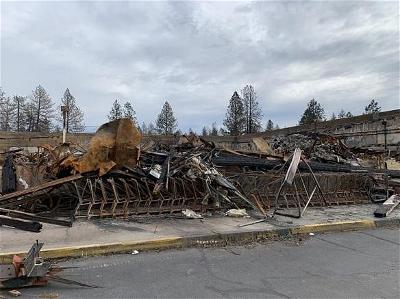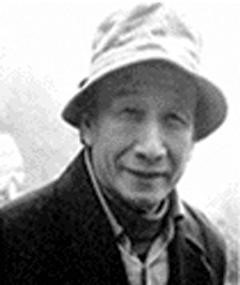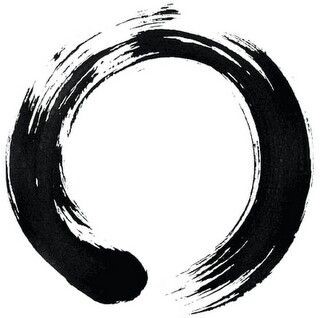MY PRACTICE (SADHANA = SPIRITUAL EXERCISES)
Nguyễn Trần Ai
Gopi Krisna states: “The target I had in mind was far higher and nobler than what is the most attractive form I could expect, from the acquirement of such coverted supernatural gifts. I longed to attain the condition of consciousness, said to be the ultimate goal of Yoga, which carries the embodied spirit to regions of unspeakable glory and bliss, beyond the sphere of opposites, free from the desire for life and fear of death. This extraordinary state of consciousness, internally aware of its own surpassing nature, was the supreme prize for which the true aspirants of Yoga had to strive…” (Kundalini The Evolutionary Energy in Man. p.38).
For me, I practice because I practice, not for any goal. Later I’m glad to find agreement of the Indian master Tilopa (988-1069) -- a key figure for the Karma Kagyu lineage and one of the 84 Mahasiddhas -- in his “The Song of Mahamudra”: “If the mind when filled with some desire/Should seek a goal, it only hides the Light” (Garma C. C. Chang. Teachings of Tibetan Yoga. p. 27).
And here is my routine.
I get up early in the morning, empty my bowels and take a shower. I wear only a pair of shorts and enter my room. I kneel on the floor in front of the altar. I light one two-foot long stick of incense, plant it in the incense burner creating an ethereal and sacred atmosphere. I bow to the Buddha, calling him “my teacher”, to the bodhisattvas Avalokiteśvara and Cundi, to Maitreya, to Ananda and to the Buddhas of 10 directions (north, south, east, west, northwest, northeast, southeast, and southwest, plus zenith and nadir) and of 3 times (past, present and future).
I do this not out of creed but out of gratitude for what I have learned from them, just as I bow to my parents for their giving birth to me and raising me.
Then facing the altar, I sit on a mat spread on the floor in the lotus posture with a cushion under my buttocks, both hands placed on the lap, the right hand (representing the enlightened mind) on top of the left one (representing the phenomenal world), palms facing upward, the tips of the thumbs touching, forming the Dhyani mudra, using the two thumbs to hold and move the rosary for counting.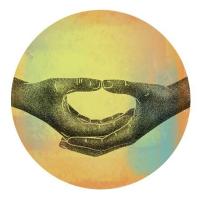
I start to practice nadi shodhana prānāyāma (the alternate nostril breathing) for a while until I feel the free circulation of the air/prana through all nadis. Then I pick up the rosary, place it between my two thumbs and start to chant the Mahakaruna Dharani, using the rosary to count, 108 times out loud (vaikhari japa), then 108 times silently (upamsu japa).
Afterwards, I practice the Cundi dharani. This practice is both secret and violent and also risky. I will briefly expose only the main parts of it.
Sitting in the lotus posture facing the altar, I compose the Maha Cundi Root Mudra, holding it in front of my chest and silently recite the 8-line litany praising the Bodhisattva Cundi. Afterwards, I place the mudra on top of my head and dismantle it. Then I practice kumbhaka pranayama (breath retention) which consists of 4 steps: (1) Puraka (inhalation), (2) Abhyantara kumbhaka (holding after inhalation), (3) Rechaka (exhalation), (4) Bahya kumbhaka (holding after exhalation). During Abhyantara kumbhaka I recite the Cundi dharani which is composed of 8 lines – the third one is the famous 6 syllabic sounds OM MANI PADME HUM—while pushing the prana down thus forcing the Kundalini—which rests coiled 3 times and a half at the muladhara chakra – through the sushumna nadi all the way to the sahasrara chakra. Afterwards I churn the air in my belly thus pushing up and then down the diaphragm before breathing out. This technique is called Uddiyana Bandha (Diaphragm Lock). At each session I practice the Cundi dharani 108 times. As a consequence, my lower belly (khí hải = prana sea) grows big and bigger than the upper belly. Aesthetically this is not good but I am not aesthetically motivated.
This exercice is similar to the Vase-Breathing exercise described by Garma C. C. Chang with meticulous details some of which I have omitted: “Sit as instructed before, and straighten the spine slightly. Put a pillow or blanket about three inches thick under the hips. Then draw in gently a long, subtle breath, pressing the air down below the navel, and swallow spittle with the air. Now contract the sphincter muscle of the anus slightly, and hold the air at the Navel Chakra. When the yogi has become proficient in pressing down the air, he can then contract the sphincter muscle more strongly than before without moving the abdomen. This practice – of pressing the upper air down, pulling the lower air up, and mingling them at the Navel Center so that the protruding lower belly take the shape of a vase or pot – is, for this reason, called the “Vase-Breathing Exercise”. When the yogi can hold the air no longer, he should take a very short breath to relieve the tension, roll the belly muscle three times, and try to hold the breath once more as long as possible. When he can do so no longer, he should raise the head slightly and release the air as slowly as he can. These four processes are called inhaling, filling, dissolving, and shooting…” (Teaching of the Tibetan Yoga. p. 58-9).
During the exercise of the Uddiyana Bandha I feel sounds resonate in my ears in different echos at each ear and heat swelling up from the last to the first chakras spreading over the whole body, sometimes making it sweat. I do not understand the meaning of this phenomenon until I found an explanation, on the one hand, by Lama Anagarika Govinda in his “Foundations of Tibetan Mysticism”, section 3 “The Idea of Creative Sound and the Theory of Vibration”: “As every living thing, so also symbols have their periods of waxing and waning. When their power has reached the zenith, they descend into all paths of daily life, until they become conventional expressions, which have no more connexion with the original experience, or which have become either too narrow or too general in meaning, so that their depth is lost when this happens. Then other symbols take their place, while they retire into the inner circle of initiates, from where they will be reborn when their time has come. By ‘initiates’ I do not mean any organized group of men, but those individuals who, in virtue of their own sensitiveness, respond to the subtle vibrations of symbols which are presented to them either by tradition or intuition. In the case of mantric symbols, the subtle vibrations of the sound play a very important role, though mental associations, which crystallize around them through tradition or individual experience, help greatly to intensify their power (pp.25-6).
And on the other hand, John Blofeld gives some clarification on “The Yoga of Psychic Heat”: “Though this yoga is sometimes valued for its subsidiary effect which is a great advantage to hermits suffering the rigours of a Tibetan winter in unheated caves, the real purpose is to achieve a state of unequalled unity and completeness in which all the forces of the adept’s being are concentrated and integrated. At the outset, he must accustom himself to doing without thick clothes or a fire to keep him warm; and he must also observe strict sexual continence as the transmuted sex energy is one of the main sources of psycho-physical heat… When he has become proficient, the adept can break his solitude and practice tum-mo where and when he likes. To test his success, his Guru may require him to sit naked on the mountainside throughout a cold winter’s night, during which he must dry sheets dipped in icy water one after another by wrapping them around himself and subjecting them to the blaze of his inner heat. Madame David-Neel speaks of competitions among newly qualified adepts who vied with one another to dry as many icy, dripping sheets as possible between late evening and sunrise. Another test is to measure the quantity of snow that melts under his body (The Tantric Mysticism of Tibet – A Practical Guide to the Theory, Purpose, and Techniques of Tantric Meditation, pp 230-1).
Madame Alexandra David-Neel, in Chapter VI. Psychic Sports of her book “Magic and Mystery in Tibet”, relates in details “The art of warming oneself without fire up in the snows” called tumo, from pages 216 through 229 and concludes: “I may say that I have myself obtained remarkable results from my small experience of tumo”. If her experience is small, mine should be qualified as microscopic.
The routine is ended with the exercise of several Yoga asanas, the last one is the Savasana (corpse posture) for complete relaxation.
At the beginning, I was sweating profusely and felt itching all over the body. My friend explained that is a sign that all the impurities stored in my body were trying to find ways to exit. He advised me not to scratch. Later I found this wise statement of Alan W. Watts: “Is it so inhuman as to say that when we itch we should not scratch” (The Way of Zen. p.117). Yes it is inhuman, it is rather superhuman.
Once I have begun to practice fluently, my friend suggested I go into reclusion at home. He asked me what period I want to take, 7 days, 21 days or 49 days. I selected 49 days. Seclusion is for intensive practice during which I have to stay isolated, not communicating with anyone, not speaking a word, stop smoking, follow the vegetarian regime and practice 3 sessions a day, in the morning, midday and evening. I used the rest of the waking time to study materials on Buddhism and yoga.
During this seclusion I had some experiences that might be qualified as bad and scary, but for me, they were just incidents. When practicing Puraka I tilted my head back in order to breathe in as much air as possible so that during Abhyantara kumbhaka my belly was full to maximum capacity. This was an audacious step. As a result of my temerity, I fainted 3 times, each time I did not know for how long I remained unconscious. When I woke up I continued to practice as though nothing happened. During this time of seclusion, I had the feeling that I could pass away any time at will. It was just like while driving, you step all the way down on the gas pedal, and there you go.
My friend introduced me to a couple about my age; the husband was the son of the assistant of the founder of a new Buddhist sect and the wife was a specialist in art embroidery. She had earned many gold medals and is the chair of the embroidery cooperative. Both have practiced for decades. They came to my house and asked me to accept them as my disciples. I refused their request and ask them why, as practitioners for so long a time, they wanted me, just having a few months of practice, to be their master. They say that Maitreya Buddha told them to do so. I don’t think that they lie but their imagination was so rich. Later both came to live in San Jose with their daughter and her husband. Later, when dying, the husband asked to be baptized as a Catholic. My wife and I with my son and his wife went down for his funeral and witnessed a Catholic priest and a Buddhist monk officiating at the same time. The wife, now a widow, spends time to go on pilgrimages to many destinations in the world. She still keeps relations with my wife and I. Once she and her daughter came to see my wife and I, bringing us, as a gift to us, a framed large beautiful embroidery with lotus flowers and leaves as motifs.
While still in Vietnam, once this couple sent a young man to see me at my house to invite me to join a 49-day seclusion party including several people, organized at their house under his guidance. The young man was a sergeant in the Army of the Republic of Vietnam (South Vietnam). Owing to his low rank he was not required by the communists to be “re-educated”, i.e. go to prison. With his wife he ran a vegetarian restaurant. After exposing his plan, he anxiously asked me whether I accept to join the party as if my presence would give more prestige to it. I jokingly answered: “I do and now, thank me”.
During this seclusion I had a grave accident. Perhaps because I practiced beyond my capacity, pressure at my right eye became so high that it seemed likely to explode at any time. It was so terrible that I writhed in pain on the bed and rolled down to the floor. People were scared and insisted on taking me to see the doctor. I refused on the basis that I have vowed to stay in seclusion for 49 days, I accepted to undergo terrible suffering instead of breaking my commitment. Inadvertently I underwent the initiatory ordeal that Mircea Eliade described as follows: “For every traditional society, suffering has a ritual value, for the torture is believed to be inflicted by superhuman beings and its purpose is the spiritual transmutation of the victim. The torture is, in itself, an expression of initiatory death… Sufferings, both physical and psychic, are homologous with the tortures that are inseparable from initiation… One had to “die” to something to be able to be re-born; that is, to be cured: one died to what was before, died to the profane condition: the man who was suffering this cure was another, a new-born man…” (Myths, Dreams, and Mysteries. pp.207-20).
Sofo Archon even emphasizes: “Pain is an integral part of spiritual growth. As Carl Jung put it, ‘there is no birth of consciousness without pain’” (3 Hard Truths About Pain Most People Hate to Admit. The Unbounded Spirit. April 28.2020).
After having undergone tremendous pain, Edwin John Dingle, an English philosopher, founder of the Institute of Mentalphysics, asserts: “The vibrations of pain are often blessings in disguise” (p. 48) and “Yet the heart that is soonest awake to the flowers is always the first to be touched by thorns” (My Life in Tibet. p. 58).
However, Buddha, after practicing austerity to the utmost for 6 years (see figures below), finally denounced extremism for it is not conducive to enlightenment and liberation. He recommended the middle path.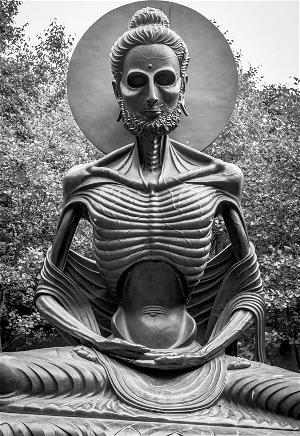
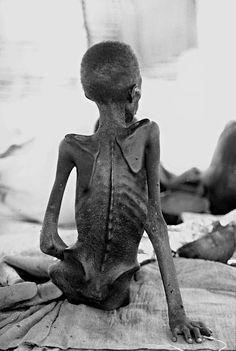
When the period of 49 days is over, I went to the best ophthalmology doctor in Saigon who was a cousin of my brother’s wife. She said that if I waited for a few more days I would lose my eye. She performed surgery with the assistance of her husband who was a M.D. standing beside in case of complication. Now the vision of my right eye is only about 10%. Is it possible that I have unwittingly traded my eye for a big step forward on my journey?
Another incident occured during that seclusion. One day my wife came and asked to see me regarding a very urgent matter. When I met her, she said that she has received a notice to come to the police office in charge of emigration to receive passports for the whole family including my wife, me, our two daughters and our youngest child, a son. However, my son had no ID card because when he failed in trying to escape and got arrested, his ID card was confiscated. So for 5 members of the family we had only 4 ID cards. My wife had good reason to worry and asked me what to do. I advised her to go ahead to the police office, everything would be OK. At the Police office, she met a truculent officer in a furious mood, angrily asking her: “Where are the ID cards?” My wife showed the pack of 4 ID cards she had placed on his desk. Without looking at them, he opened a drawer and using his hand swept them into the drawer and handed out 5 passports to my wife. Thinking how relieved my wife was!. Now all 5 of us are in the U.S.A. Later when recounting her adventure, my wife always deemed it as a miracle I performed. Maybe it was rather simply the tantrum that the bad tempered police officer demonstrated.
We came to the U.S.A. in 1989, landed at San Francisco airport and crossed the Bay Bridge. A few days later, on October 17, 1989, it was damaged by a magnitude 6.9 earthquake; one of its spans collapsed. We were welcomed more tumultuously than a 21 cannon salute! We arrived and settled in Paradise, 165 miles northeast from San Francisco. Just before Christmas that year, the largest snowstorm in history for the Southeast U.S. coast occurred. This was a rather glacial welcome with 4 feet of snow, too heavy for some roofs that collapsed. Are we storm petrels or everything related to us must be of grandiose dimensions?
We settled in a country we recognize as our second motherland, in a remote town, Paradise. After a few years, we moved down to Chico where most of our children worked. These two small towns, 15 miles apart, are connected by the highway named Skyway.
On November 8. 2018 Paradise was turned to Hell by the Camp Fire—the deadliest wildfire in the United States since the Cloquet fire in 1918, and high on the list of the world’s deadliest wildfires; it is the sixth-deadliest U.S. wildfire overall. It destroyed 18,804 houses (95%) in the first 4 hours and killed 85 persons.
At that time, my handicapped wife lived in Paradise with our elder son who took care of her. They were surprised by the fire and almost got stuck. Our son drove his car trying to get out but too late. He had unloaded the wheelchair and wanted to push my wife out of the surrounding fire. Fortunately a firefighter opened a way for him to get out by car. Just in time. Furthermore, his house, engorged with valuable antiques, was one among a few rare houses that escaped the fire. He also got compensated for the burned small hut he used to store his scrap pieces of antiques. By the way, both my sons inherited from me the hobby of collecting antiques, such hobby I inherited from my father. Previously my friends in Saigon said that we had expensive hobbies, my wife collecting gems and me, antiques.
I can boast that my wife and my son – and his fortune – were saved owing to another miracle of mine. Miracle in Sanskrit is “siddhi” and those who perform siddhi are called “siddha”. In Tibetan Buddhism there are 84 mahasiddhas (great siddhas). Maybe I’m the 85th. Why not?
I still practice but with much reduced intensity, reciting daily 49 times the Mahakaruna mantra and 21 times the Cundi mantra, without omission, except when I travel.
MY ACHIEVEMENT
I have treaded my journey with perseverance for several decades. Recapitulating what I have achieved, a tangible evidence is at hand when I touch the crown of my head. There I find a bump similar to the usnisa (the protuberance on the top of the Buddha’s skull). Mine is much smaller than the Buddha’s of course, maybe 1/1000th. Just making a comparison is a great blasphemy but I think Buddha would not mind. If he does he would not be Buddha. I do not know why and when the bump protrudes. It might be a manifestation of the result of my practice like the bulging muscles of a bodybuilder. My skeptical elder son alleges that it is a cancer tumor. He wonders why I have had it for that long and I have not died yet. I should offer him an easy answer: “Because I am your father who art in heaven” (The Lord’s Prayer). Anyhow, the bump is there to be shown to anyone who wants to verify.
I have another achievement that I deem much more important. It is my attitude vis-à-vis life. I am fearless of dying, and also of living. I have learned the law of impermanence and keep equanimity when facing misery. I know time is a holistic healer. I am not pessimistic and still enjoy good things in life but am not attached to them, being aware all the time of their brevity.
I have learned to live in utmost simplicity, with common sense. For example, why should we not steal? Not because of being afraid of being caught by cops or even by the Super Cop (the name I give to God), simply because the object we covet does not belong to us. Furthermore will that object make us happier or more miserable? It is obvious that antique collectors’ love of beauty is tainted by mercantilism. In Saigon, they formed a kind of unofficial club, knowing one another. Once there was a rumor that a country woman in Central Vietnam (CVN) in excavating a place to build a pigsty, found a lot of 5 pieces of Chinese antique porcelain. She sold them to a barber for $5,000. Some antique dealer paid VN$20,000 to get them. The lot passed through several hands, finally reaching the price of VN$200,000. The guy who paid that price now wanted VN$1,000,000. My friend Ngô Bảo, a professor of Arts, sent his son to CVN to negotiate, limiting the deal at VN$500,000. At that time, Hà Thúc Cần, a cameraman and director of the film Đất Khổ (Land of Sorrow), happened to be present at that locality, paid the full price (VN$1,000,000, equivalent to a little more than my 3 month salary+allowances or 5 month salary of the minister of Economy) to have the lot. Cần had the best and largest collection of Cham stone statues in Vietnam. His house resembled a Cham museum but he was not specialized in Chinese porcelain antiques. I came to his house, rather his Cham museum, to have a look at his renowned acquisition. Among the five pieces, contained in a large clay pot, I was hypnotized by the beauty and rarity of a Southern Song dynasty (1127-1279) small celadon bowl. I offered to reimburse Cần VN$1,000,000 to have that bowl and he had the rest of the lot for free. If Cần were a true connoisseur, he would have accepted the deal. Because the deal came from me, Cần may be suspicious that the bowl must be worth more than that. He declined, saying except that bowl I may have any of the four remaining items and pay little. It was now my turn to decline. During that whole period of time, I have experienced all kinds of emotional feelings that even gave me insomnia. But after that moment of extravagant fantasista, I lost interest in the bowl and saw Cần’s refusal as a bonanza.
The story reached an American couple who expressed their desire to buy the bowl. Cần asked for US$6,000 (equivalent of a 5 month salary for an American engineer). The Americans exclaimed: “Are you crazy?” But coming home, the wife, enamoured with the bowl, could not sleep without it. The husband resigned himself, made a check for $6,000, brought it to Cần’s house and threw it to the face of Cần who could not believe his eyes. But the perplexed Cần said that the bowl was no longer for sale, having been given to his wife as a gift. Then came the 30 April 1975. Cần moved to Singapore and had an antique store there. I don’t know whether he had the bowl with him?
Although this story seems to be legendary but a tiny porcelain cup, dating to the Ming Dynasty (1368-1544), has fetched US$36 million at an auction in Hong Kong.
The lesson of the bowl for me is that if I had acquired the bowl it would be my possession but I did not, and the sum of VN$1,000,000 remained my possession. When the communist came in, neither the bowl nor VN$1,000,000 was in my possession. I realized that possession -- in any form -- is aught and apt to become naught (Sunyata in Sanskrit). Any possession, including family, wealth, position… is extrinsic. Perhaps only our breath is an intrinsic possession… until we die. Therefore, being attached to any possessions is ignorant and leads to sorrow. I have learned to be more or less detached of everything.
So with or even without the coronavirus, I am comfortable with social distancing and self-quarantine. I delight in self-isolation. For me solitude is bliss. But anything has a price to be paid. The inconvenience of the present shelter-in-place for me is that I cannot go eat out, which I like much. I am gourmet, not gourmand, mind you.
As for physical evidence of my humble achievements, I have published 2 tomes of the first volume of a trilogy I plan to write. I entitle that volume “On the margin of Buddhism” including tome I of 600 pages published in 2000, tome II of 832 pages published in 2002. Reading these books is so boring that it is hard to find a publisher for the next 2 volumes. I send the second volume entitled “The Particularities of Buddhism” to be published in installments on a quarterly Buddhist magazine in Santa Ana, California, each issue about half a dozen of pages, thus about 25 pages a year. For a book of about 700 pages, it would need about 30 years to publish. I would not live that long. Anyhow, recently the magazine has stopped publishing due to the death of the Venerable Abbott of the temple who published the magazine. The third volume of the trilogy entitled “Buddhism in the World today” will definitely have no chance to see light of day.
I have also contributed several hundred articles on political topics published in a magazine also in Santa Ana. I have never been paid for my writing, as it was a hobby that entertained well my mental function. While writing, I had the feeling of communicating with my readers. Suddenly this political magazine ceased publication at the same time as the Buddhist magazine. I became jobless, rather hobbyless. No surprise. It was only the normal manifestation of the Law of Impermanence. Maybe the karma that causes my toiling has exhausted and I am deferred in laboring.
At last, I would like to borrow a quotation from Stephen T. Butterfiled to “justify” the account of “My Journey”: “Vajrayana students had always been discouraged from trying to evaluate our personal journey. This was looked on as a form of egotism, an attempt to make a big deal of our practice, to use the teachings as a cosmetic for the self… Examining the journey may thus become a way of defeating its purpose… In the Heart Sutra, Avalokitesvara, the bodhisattva of compassion, is asked how a son or daughter of noble family should train on the path. He declaims, ‘There is no path, no wisdom, no attainment, and no nonattainment’. The Buddha smiles with approval…” (The Double Mirror – A Skeptical Journey into Buddhist Tantra. P. 10-13).
Although I have not “attended to my (ego’s) funeral” yet, I never have the intention of using any cosmetic for my “self”. I just want to keep track of what I have done and what I am doing. That’s all. If this account happens to fall under the eyes of some readers and possibly ignite some pinch of spiritual fire in them, it will be all the better. Namaste!
Appendix: Following are a couple of excerpts explaining Kundalini Yoga:
- From W.Y. Evans-Wentz: To yogins who follow the Path of the Tantras, it is Kundalini Yoga which is the Royal Yoga… By means of Shakti Yoga, the Tantric yogin attains discipline of body and mind and then proceeds to the mighty task of awakening the dormant, or innate, powers of divinity within himself, personified as the sleeping Goddess Kundalini. One by one the psychic centers, or chakra, of his body are brought into functioning activity, as the Goddess awakens in the Root-Support Lotus (Skt. Muladhara Chakra) situated in the perineum, at the base of the spinal column, and rises, chakra by chakra, to meet her Shakta, the Lord Shiva,who sits enthroned in the Seventh Chakra, in the pericarp of the Thousand-Petaled Lotus (Skt. Sahasrara Padma) in the brain center. Then, from the mystic union of the Shakta and the Shakti, is born Enlightenment; and the yogin has attained the Goal (Tibetan Yoga and secret Doctrines. p. 32).
- From Allison Ritter:
Sexual Energy is the most powerful and vital energy in the human body. Kundalini Yoga teaches us how to raise the sexual energy up the spine where it can be used for spiritual development. If sexual energy is limited to the physical plane by selfish sexual behavior, there can be many grave consequences. Through different techniques in kundalini yoga (kriya, pranayama, and meditation) the meditative mind is invoked to raise the sexual energy from the lower, physical planes to the higher, more subtler planes of consciousness, allowing the energy to manifest creativity. In this way, sexual energy is used as a vehicle for fulfilling one’s divine destiny (Kundalini Yoga – Kriya for Refining Your Sexuality and Spirituality).
- From Stephen T. Butterfield:
In Vajrayana [Buddhist esoteric diamond vehicle], the separation between samsara and enlightenment, between good and evil, is regarded as an artificial convention. The poison of samsara, the neurosis, the passion, aggression, ignorance, envy, and pride, are not ejected, but experienced instead as forms of buddha-mind. Confusion is wisdom in disguise. The mess is now regarded as a stage filled with creative possibilities. Vajrayana respects social conventions, but is not bound by them. It is therefore, inevitably, a highly controversial vehicle, even among other Buddhist schools. It could be highly dangerous too. The actual practices of Vajrayana are not especially exciting; most of them are as sedate and tedious as anything else in the Buddhist menu. The danger comes from within ourselves, from the energy of our minds, which is the energy of the universe. Vajrayana invites us to open up this energy, to enjoy and work with it directly, instead of keeping it under lock and key. If we are unprepared for the task, we hurt ourselves, or somebody else… (op. cit. p. 32).

